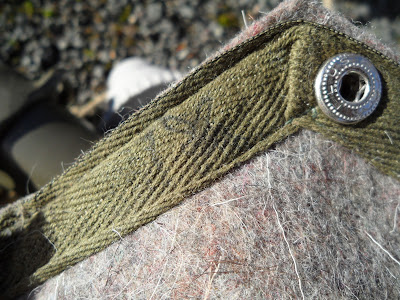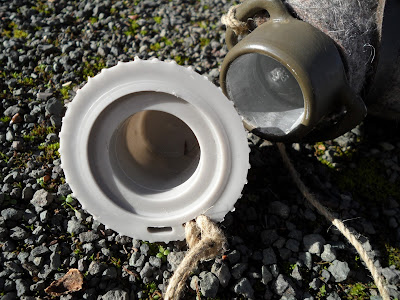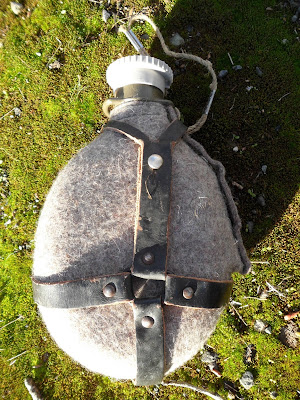Today we'll be taking a look at my WW2 vintage US Military Jeep shovel. These shovels are correctly referred to as the " Number 2, Round Point, D-Handle" shovel. These shovels first are mentioned in US Army specifications papers back in 1917, with updates in 1934 and 1940 (for the WW2 years).
These old shovels nearly always appear to be a "civilian shovel" to the untrained eye.
In fact, I found this shovel at a local yard sale and purchased it for a few dollars, not realizing it was a "Jeep Shovel". It banged around the garage for quite a few years before I rediscovered it and realized what it was!
They are normally found in their "natural wood and metal" finish and outwardly show no signs that they are a military shovel. The US Army (and other branches), mounted these shovels on Jeeps and other armored vehicles, but they are most often associated with the iconic Jeep.
The US Army specification set out size shape and basic construction for shovels, but allow for a very wide variety of handle styles, handle attachment and blade shank variations. From what I understand, the Army specifications were written so that it would be easy to source shovels from nearly any US manufacturer, without having to require them to re-tool for a new style of construction.
For those of you who need to know "every little detail" about the specifications, etc., please check out this web page. It is by far the very best source of that information about these shovels that I have found anywhere!
http://jeepdraw.com/John_Barton1_Shovels.html
Here are the basic differences that are spelled out in the different "War Years" Army specification papers.
The size and shape of the shovel remains the same for all years, but the required markings change:
- 1917-1934: Marked with USED, Name and Trademark of manufacturer (USED means United States Engineering Department)
- 1935-1939: Requirement for USED is eliminated. USA must be stamped, along with Name or Trademark of manufacturer.
- 1940- on: The only requirement is that the shovel must be marked with manufacturer's Name or Trademark "Where Necessary".
The Number 2 Jeep Shovel, along with other pioneer tools, were not issued with the vehicle when it rolled off of the assembly line and into the field. Each unit procured their own shovels (axes as well) and outfitted their jeeps and other armored vehicles in the unit as they saw fit.
 |
| US Army Half-Track with shovel and pick, WW2 Vintage. |
My shovel is from the post-1940 era, better known as the WW2 era. The shovel is not marked with a maker or trademark, but is marked with "2" and it fits the military specifications perfectly. This exact style of shovel is seen in many of the old photos. Be sure to check out the link I posted above to see the wide variety of handle styles!
The handle is the "split-wood" type and is reinforced with metal bands and rivets. It is in amazing condition for it's age and I have done only minimal conservation work on it. Basically it is in "as found" condition, with a good coat of oil applied to the metal and wood.
Here is the album. Enjoy!




























































